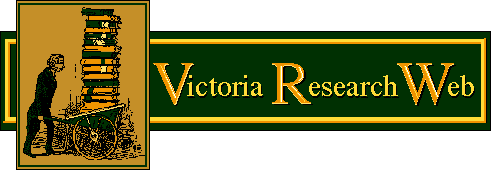

There are a great many splendid Victorian-related websites these days. Some of them date all the way back to "the 1900s" while others are still very much under construction. A number of useful websites are referenced throughout this site, but there are hundreds of others, far too many to list. The following is simply an annotated selection of impressive projects to which we would like to call closer attention. At a time when paywalls continue to distort and constrain what can be researched and by whom, these sites all possess the singular virtue of being entirely free for anyone to explore.
Resources for various kinds of 19th-century research can of course be found throughout the VRW, while links to museums and other places of Victorian interest can be found on the research trip page. What follows here is a modest selection of useful, entertaining, and unusual webpages, including some smaller or more narrowly specialized sites that tend to get lost in the shuffle.